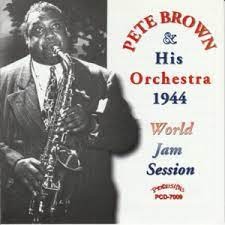
Daily Dose Of Jazz…
James Ostend Brown was born on November 9, 1906 in Baltimore, Maryland and learned to play piano, trumpet, and saxophone in his youth. Professionally known as Pete Brown, he played in New York City with Bernie Robinson’s orchestra in 1928, and played from 1928 to 1934 with Charlie Skeete.
1937 saw him working in the John Kirby band for several years and during the decade he worked with Frankie Newton, who was also a member of Kirby’s band. Brown and Newton recorded often. In addition to recording under his own name, he also recorded with Willie “The Lion” Smith, Jimmie Noone, Buster Bailey, Leonard Feather, Joe Marsala, and Maxine Sullivan.
Pete worked on 52nd Street in New York City in the 1940s, both as a sideman with Slim Gaillard, among others. As a bandleader, he was in Allen Eager’s 52nd Street All-Stars in 1946.
In the 1950s, Brown’s health began to fail, and he receded from full-time performance. He played with Joe Wilder, Big Joe Turner, Sammy Price, and Champion Jack Dupree. He appeared at the 1957 Newport Jazz Festival with Coleman Hawkins and Roy Eldridge. His last appearance was in 1960 with Dizzy Gillespie.
Alto saxophonist and bandleader Pete Brown, who was Cecil Payne and Flip Phillips teacher, transitioned on September 20, 1963 in New York City.
More Posts: bandleader,history,instrumental,jazz,music,saxophone
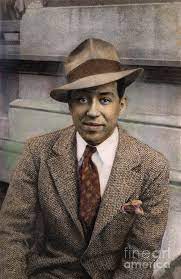
Jazz Poems
Jazz Band In A Parisian Cabaret Play that thing, Jazz band! Play it for the lords and ladies, For the dukes and counts, For the whores and gigolos, For the American millionaires, And the school teachers Out for a spree. Play it, Jazz band! You know that tune That laughs and cries at the same time. You know it. May I? Mais oui. Mein Gott! Parece una rumba. Play it, jazz band! You’ve got seven languages to speak in And then some, Even if you do come from Georgia. Can I go home wid yuh, sweetie?Sure.
LANGSTON HUGHESfrom Jazz Poems ~ Selected and Edited by Kevin Young
More Posts: book,classic,collectible,history,jazz,library,poet
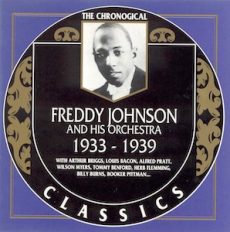
Daily Dose Of Jazz…
Louis Bacon was born on November 1, 1904 in Louisville, Kentucky. His family moved to Chicago, Illinois when he was a young child. After a short stint playing with Zinky Cohn in Michigan, he relocated to New York City in 1928. There he worked through 1938 with musicians Louis Armstrong, Benny Carter, Duke Ellington, Bingie Madison, Bessie Smith, and Chick Webb among others.
Contracting tuberculosis in 1938, resulting in a performance hiatus, but by early 1939 he was playing with Benny Carter once more. Later that same year, he embarked on a tour of Europe with Willie Lewis and remained there for two years. He recorded under his own name as well as with Lewis and Freddy Johnson.
After his return to the United States he worked with Garvin Bushell, Cootie Williams, and Jesse Stone. Shortly after the end of World War II, he stopped playing once again due to persistent health problems. He did play trumpet again briefly in 1959–60, working in New York, and late in his career taught voice and sang with Wilbur De Paris.
Trumpeter and vocalist Louis Bacon transitioned on December 8, 1967.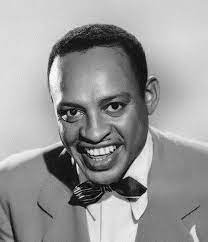
Three Wishes
Pannonica finally got the opportunity to ask Lionel Hampton what he would wish for and his retort was:
-
- “To be in tune with jazz. Jazz to me is like the human emotion of the Negro. From the time he was in bondage praying to God to give him freedom – that was the blues then, coming from the spiritual vein – and when he was freed some, he would make jazz more happy. It was coming from the Negroes. From the time of the slave in the cotton fields, swinging up, you dig? From the time it got popularized and commercial, and left the cotton fields and railroad tracks, and they were putting it in the cafes. It was the days of King Oliver and Sidney Bechet..”
- “The colored man always has been the one to change the color of jazz. As the country advanced, they changes the music. It’s always been moving along, integrated by Negroes, turning to his feelings as he advanced. From Louis Armstrong up to Fletcher Henderson, Don Redman, Edgar Sampson, and Sy Oliver. They started changing the picture of jaz. It was their orchestrations, their chart that made jazz. They began writing arrangements for Benny Goodman, Tommy Dorsey, and so on – for the ofay bands. fats Waller, Jimmie Lunceford, those guys were all great arrangers. Then Monk, Dizzy, Prez, Don Byas, and Charlie Parker, they came in, all influencing the music, all great instrumentalists. As the Negro got free he added more ingredients. You’d need an encyclopedia to tell it all. I hope I’ll always be tuned so I can dig the transitions in jazz. Because there are more transitions coming.”
- “Lots of white folks write about jazz, but they don’t know the pains of it. You should be the one to write about it, because you understand. And musicians will talk to you. Gotta get down on that stand now, but I’ll be over to your pad tomorrow, and we’ll do this with the tape recorder. It’ll take another three of four hours, at the very least. I’ve not done more than get started on the first answer yet, you dig?”
More Posts: bandleader,baroness,history,instrumental,jazz,music,pannonica,percussion,piano,three,vibraphone,wishes
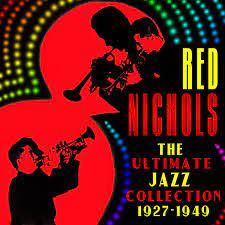
Daily Dose Of Jazz…
Rolland Pierce “Rollie” Culver was born on October 29, 1908 in Fond du Lac, Wisconsin. His first entry into professional entertainment was as a tap dancer, but after 1930 he concentrated on drumming.
He played in the territory band of Heinie Beau for most of the 1930s, then, in 1941, began playing with Red Nichols. He drummed behind Nichols for more than twenty years, working with him right up to Nichols’s death in 1965.
Other associations include work with Jack Delaney and Raymond Burke. He became a session musician for film soundtracks. Drummer Rollie Culver transitioned on December 8, 1984 in Culver City, California.
More Posts: drums,history,instrumental,jazz,music




